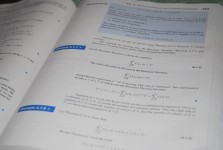
By Naomi Kruh
Staff Writer
Several teachers have decided to have a midterm or final make-up a missed test grade, this avoids the issue that a student who misses the test day is given an unfair advantage on the test because they had an ample amount of time to study and prepare for the test.
When a student misses a test, some teachers allow them to make up the missed test the day they return. However, according to Advanced Placement Environmental Science teacher Trevor Oystrick, a majority of the math and science department has now opted to have students have the grade they receive on the midterm or final compensate for a missed test during the semester.
According to principal Ben Dale, the only official school policy for making up a test is that a student has the number of days they missed to make-up the test. Although the policy of having a midterm or final replace a test may seem unfair to some, according to principal Ben Dale, this policy was given his approval this year before back to school night.
The policy that has been put in play is aimed to not punish any student who missed a test, but rather to ensure that students are on an even playing field. This also allows students to have more freedom when taking tests. According to Oystrick, this policy allows some students can choose to not have a test graded if they feel they did poorly and rather accept it as a missed test and have a midterm or final replace that grade. This way a student can study more for one of those tests to get a better grade to compensate for the missed test.
According to Oystrick, one of the main reasons the math and science department does not allow make-up tests is because it is unfair to those who studied hard to be prepared on the actual test day. By allowing students to make up a test the following day, they have time to study more and ask fellow classmates about the material, which does not put all of the students on a level playing field.
Having a midterm or final replace a test causes some students to worry about their grade since those tests cover much more material than a unit test. However, according to Oystrick, this policy only hurts a few students because in most cases many students score around their average on these major tests.
By having a system that allows both students who were there for a test and those who were not there from a test to benefit is a way this test make-up policy shows its strength. For example, according to Dale, if a teacher has a policy where a student can make-up a test with a final or midterm and anybody else can take those tests to replace a lower grade, the policy must do both things for the student who missed the test.
One way students could try to avoid this policy is if a teacher were to make multiple versions of a test. For example, a teacher could make a test for the planned test day and one for those who are absent that way students could make up the test when they return to school. However, according to Oystrick, it is much easier for a teacher to make a different version of a midterm or final rather than one for every unit test.
Overall, the test make-up policy may have its flaws in some people’s eyes, but for the most part it aims to bring fairness to all students. The policy is not meant to favor those who have made sure to be present for every test, but rather make sure that all students are given equal opportunity when it comes to testing.




Leave a Reply